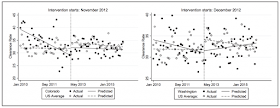Why Marijuana Consumers Have Smaller Waistlines vs. Non-Users
It’s a well-established fact that marijuana causes users to experience acute hunger, a phenomenon known as the munchies. But curiously, research also has found that the average cannabis consumer actually has a slimmer waistline compared to non-users.
For a while, that stereotype-defying finding has left researchers scratching their heads. Thankfully, a new study out of Indiana University, which is pending publication, offers a compelling, theoretical explanation.
Before we get into the specifics of the study, let’s take a look at some background: humans have endocannabinoid systems that are responsible for things like regulating sleep, appetite, stress and metabolism. Ingredients in marijuana like THC and other cannabinoids are known to stimulate receptors in the endocannabinoid system, which can produce a wide range of physiological effects.
OK, but how does this explain why cannabis users are generally slimmer than non-users?
Well, the researchers started with a simple observation. Western diets, exceptionally high in carbs and sugar—are associated with a series of chronic health conditions such as obesity. One commonality among people who suffer from these conditions is that they have a higher ratio of omega-6 to omega-3 fatty acids in the body.
There is “abundant evidence” that this increased ratio of omega fats causes overstimulation of a main cannabinoid receptor, which “leads to metabolic syndrome, contributing to chronic diseases,” the study authors wrote.
People who are able to reduce their level of this specific cannabinoid receptor (CB1R) often experience weight loss. There are different ways to achieve this effect, but one possibility identified in earlier research is the introduction of cannabis into the equation. Marijuana causes a down regulation of CB1R, a receptor that “plays a major role in assimilation, storage and conservation of energy.”
In layman’s terms, this means that while consuming cannabis certainly heightens hunger among users in the short-term, it also helps people properly manage that food after it’s entered the body. Even four months after you stop using cannabis, that effect is still present. Therefore, the researchers concluded, the impact of cannabis use on the CB1R receptor “more than offsets the short-term increase in energy stores that follow” a case of the munchies.
Again, however, this is a theoretical explanation based on existing research about the endocannabinoid system, marijuana and metabolism. As the researchers emphasized in their conclusion, the study raises many questions, including:
“How many other conditions respond in opposite directions during acute and long-term exposures to Cannabis? How does this paradox impact therapeutic uses of Cannabis? Do the long-term effects of Cannabis use arising from downregulation of CB1R exacerbate the underlying condition that drove patients to therapeutic use of Cannabis in the first place? For example, if a patient uses Cannabis for anxiety, will the resulting downregulation of CB1R result in increased anxiety between therapeutic doses? How does dosage influence this relationship? Is CB2R also downregulated during Cannabis use, and if so, what are the implications for treatment of CB2R-related conditions with Cannabis?”
For the time being, we’ll have to wait on those answers. But if you were perplexed by headlines and social media posts about marijuana consumer being skinner than their non-using counterparts, this study may well serve as an important piece of the puzzle.
--------------------------------------------------------------------------------------------------------------------------------
Legalizing Marijuana Helps Police Solve Other Crimes, New Study Shows
Marijuana activists have long disputed that legalization would free up police departments to focus on other crimes. Yet six years after Colorado and Washington State voted to end prohibition, what does the data show?A study recently published in the journal Police Quarterly shows that advocates were right after all. Police clearance rates, a figure that represents the number of crimes that resulted in an arrest divided by the total number of reported crimes, increased in both states post-legalization.
A logical argument. Before a state makes it legal to possess marijuana there are officers who will take time to investigate and charge individuals for low-level cannabis offenses. But when a state legalizes, they no longer have to allocate law enforcement resources to marijuana-related crimes, therefore enabling officers to go after different, and sometimes more serious, cases.
But up until this study, there wasn’t much researching exploring the direct relationship between legalization and crime clearance rates. For the first time, researchers demonstrated (in CO and WA) that police were able to make more arrests for various crimes post-legalization. That includes violent crimes, property crimes, burglaries and motor vehicle thefts.

“While our results cannot specifically explain why police clearance rates have increased in Colorado and Washington, we think the argument that legalization did in fact produce a measurable impact on clearance rates is plausible,” the researchers concluded. “Our models show no negative effects of legalization and, instead, indicate that crime clearance rates for at least some types of crime are increasing faster in states that legalized than in those that did not.”
“As we document here, prior to legalization, several crimes clearance rates were either flat or decreasing. However, in the post-legalization period, we see considerable improvement. We cannot offer with absolute certainty that these changes are entirely the result of marijuana legalization, though we are quite certain that legalization has not unduly hampered police performance, at least as measured by clearance rates. Moreover, in the absence of other compelling explanations, the current evidence suggests that legalization produced some demonstrable and persistent benefit in clearance rates, benefits we believe are associated with the marijuana legalization proponents’ prediction that legalization would positively influence police performance.”
Alright, so how did crime clearance rates change post-legalization?
There were some modest differences in clearance rates between Colorado and Washington State, but the overall trend revealed an increase in these two states compared to all other states, the study found. Here’s a breakdown of the clearance rate changes for four different crime types:



